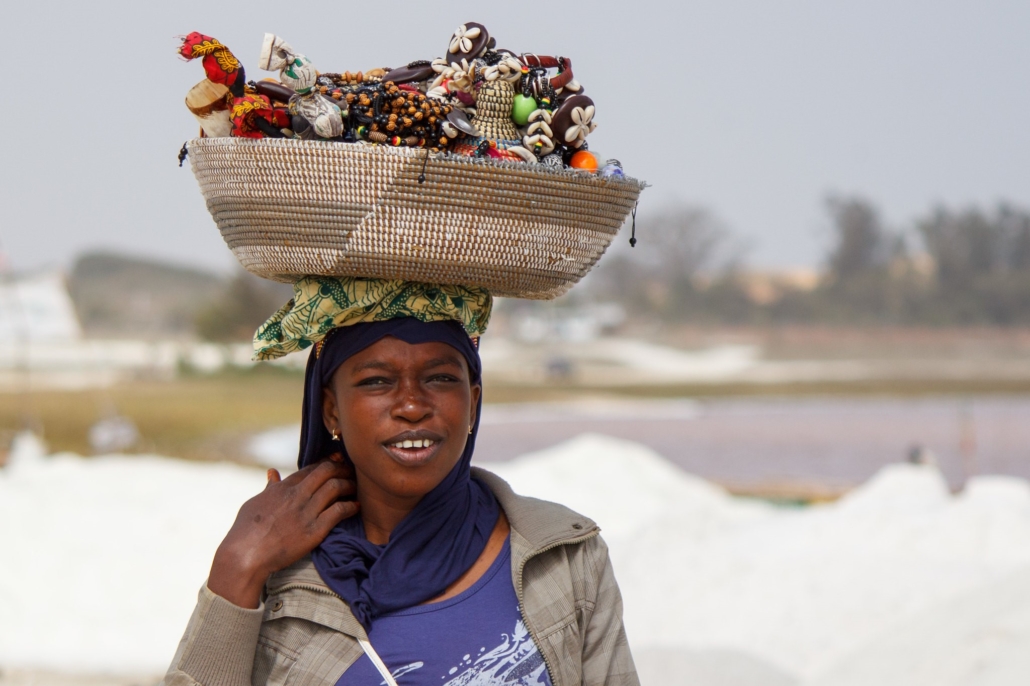The Link Between Art and African Poverty Reduction

In Africa, poverty is an immense issue as 43 percent of the nation’s people live below the international poverty line. Despite this painful reality, art is playing a large role in pulling many of the continent’s people out of the poverty they started life in. Thanks to organizations such as Bead for Life in Uganda and ASTEP in South Africa, creativity is providing these impoverished people with both a platform for self-expression and a means to fiscal independence. Here are some organizations that show the link between art and African poverty reduction.
Bead for Life
After meeting Millie, a poor Ugandan mother who had a passion for transforming objects into colorful handmade creations, Ginny Gordin, Torkin Wakefield and Devin Hibbard came up with an idea. Following this event in 2004, they founded Bead for Life, a nonprofit organization that supports female financial independence by providing African women with recycled paper that they can craft into jewelry and sell for profit. The organization also works to educate these impoverished women on how to run small-businesses through an initiative known as Street Business School. Since its founding, the 15-year-old organization now exists in 10 countries across Africa and is currently providing 52,000 African women with financial independence. The link between art and African poverty reduction is undeniable, making it a necessary step towards eradicating the poverty that rules too many African lives.
Artists Striving to End Poverty (ASTEP)
When ASTEP founder and Broadway Musical Director, Mary Mitchell Campbell, saw the power of art in cultivating the skills necessary to succeed at life, alongside the help of Juilliard students, Campbell founded Artists Striving to End Poverty (ASTEP), a nonprofit organization that works to heal poverty-stricken communities through art. When Evan Todd and Dick Scanlan recognized the link between art and African poverty reduction, they worked with the organization to establish artsINSIDEOUT in South Africa, a program that works to improve the lives of South Africa’s impoverished mothers and children who the AIDS epidemic strongly impacted. Through the help of ASTEP’s volunteer artists, the organization runs two-week-long art camps that not only foster storytelling and the visual arts for these South African people but also provides them with the tools necessary to lead successful future lives.
Gahaya Links
The Rwandan Genocide in 1994 caused thousands to become economically unstable and hit women the hardest. Thanks to the founders of Gahaya Links, Janet Nkubana and Joy Ndungste, however, basket-making is addressing Rwanda’s female economic instability. By holding workshops that teach impoverished women how to weave, Gahaya Links is able to provide its female weavers with a stable income, as the organization sells its finished baskets in the U.S. market, with top buyers being Macy’s and Fairwind’s Trading Inc.
The organization’s social impact has been astounding, as 100 percent of Gahaya Links female weavers can now afford health insurance, 10 percent have received a promotion to become community leaders and 80 percent have their own bank accounts. These women also now have access to clean water, are able to afford an education for their children and lead better lives overall. The organization has not only granted these women the economic stability they deserve but has also provided them with a pathway to fiscal independence.
The Amal Foundation
In North Africa, Libyan women do not receive encouragement to earn an income, and so when they become widowed or undergo a divorce, many become impoverished. Thanks to the Amal Foundation, however, these women are using embroidery as a means of attaining financial stability. Thanks to the Amal Foundation’s mandate to teach these women how to embroider and help them sell their work in local markets, these women are able to achieve financial independence. This organization’s work exemplifies the connection between art and African poverty reduction, as these women no longer endure the poverty that once dominated their lives.
Just One Africa
Through the initiative Beads for Water, Just One Africa is working in unique ways to provide impoverished African children with access to clean drinking water. The organization purchases handmade necklaces from African artists and then restrings them into bracelets that it sells in the U.S. market. Thanks to this organization, these African artisans are not only earning a stable income, but Africa’s poor children are also reaping the benefits, as a single Beads for Water bracelet provides 200,000 gallons of clean drinking water to Africa’s impoverished children.
Giving impoverished African space where they can profit from their self-expression is a wonderful poverty-fighting strategy whether they are making baskets or jewelry. Art’s ability to grant financial stability to these poverty-stricken citizens exemplifies the immense power of human creativity and its connection between art and African poverty reduction. Thanks to organizations such as The Amal Foundation and Gahaya Links, Africa’s impoverished people are not only rising out of poverty, but they are getting to do it in a fun and meaningful way.
– Candace Fernandez
Photo: Flickr
